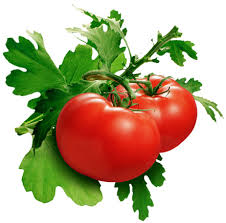Mass and Volume Modeling of Tomato Based on Physical Characteristics
Keywords:
diameter; dimension; estimating model; projected area; regression; sizingAbstract
There are instances in which it is desirable to determine relationship between various physical characteristics of vegetables and fruits. Although vegetables and fruits are often graded on the basis of size and projected area, it may be more economical to develop a machine which would grade by produce mass or volume. Therefore, relationships of mass and volume with other physical characteristics are needed. In this study, Market-King variety of tomato were selected and fruit dimensions and projected area were used to develop a number of models for predicting mass and volume of tomato. Three general models were established; Single and multiple variable regressions of tomato dimensions, single and multiple variable regressions of projected areas and modeling tomato mass and volume based on its measured volume and mass. Results revealed that for the first model that mass and volume can be best modeled on the basis of intermediate and minor diameters. Results for model #2 show that model based on 2nd projected area is a preferred model for mass and volume estimation. The third model which is based on ellipsoid volume can estimate tomato mass satisfactorily( ). This study indicated that for estimating tomato mass the third model can give best results. On the other hand, for estimating tomato volume, the 2nd projected area can give best results.References
Akbar, R., Aydin, C., 2005. Some physical properties of Gumbo fruit varieties. J. FOOD ENG., 66, 387-393.
Aydin, C., Musa Ozcan, M., 2007. Determination of nutritional and physical properties of myrtle (Myrtus communis L.) fruit growing wild in Turkey. J. FOOD ENG., 79, 453-458.
FAOSTAT, Crop statistics., 2013. http://faostat.fao.org/site/567/DesktopDefault.aspx?PageID=567#ancor, visited in 24/04/
Keramat Jahromi, M., Rafiee, S., Mirasheh, R., Jafari, A., Mohtasebi, S.S., Ghasemi Varnamkhasti, M., 2007. Mass and Surface Area Modeling of Bergamot (Citris medica) Fruit with Some Physical Attributes, Agr. Eng. Int., the CIGR E- j. Manuscript FP 07029. 9, 1-11.
Khanali, M., Ghasemi Varnamkhasti, M., Tabatabaeefar, A., Mobli, H., 2007. Mass and volume modeling of tangerine (Citrus reticulate) fruit with some physical attributes. INT. AGROPHYS., 21, 329-334.
Khoshnam, F., Tabatabaeefar, A., Ghasemi Varnamkhasti, M., Borghei, A., 2007. Mass modeling of pomegranate (Punica granatum L.) fruit with some physical characteristics. SCI. HORT., 114, 21-26.
Lorestani, A.N., Tabatabaeefar, A., 2006. Modeling the mass of kiwi fruit by geometrical attributes. INT. AGROPHYS. 20, 135-139.
Miller, W.M., 1990. Comparison of two classification approaches for automatic density separation of Florida citrus. COMP ELECTRO AGRI., 4, 225-233.
Mohsenin, N.N., 1986. Physical Properties of Plant and Animal Materials. Gordon and Breach Sci. Publ., NY, 891 pp.
Naderi-Boldaji, M., Fattahi, R., Ghasemi-Varnamkhasti, M., Tabatabaeefar, A., Jannatizadeh, A., 2008. Models for predicting the mass of apricot fruits by geometrical attributes (cv. Shams, Nakhjavan, and Jahangiri). SCI. HORT., 118, 293-298.
Tabatabaeefar, A., Rajabipour, A., 2005. Modeling the mass of apples by geometrical attributes. SCI. HORT., 105, 373-382.
Tabataaeefar, A., Vefagh-Nematolahee, A., Rajabipour, A., 2000. Modeling of orange mass based on dimensions. AGRIC. SCI. TECH., 2, 299-305.

Published
How to Cite
Issue
Section
Copyright (c) 2014 Hadi Izadi, Saadat Kamgar, Mohammad Hosein Raoufat, Sahar Samsami

This work is licensed under a Creative Commons Attribution-NonCommercial-NoDerivatives 4.0 International License.



